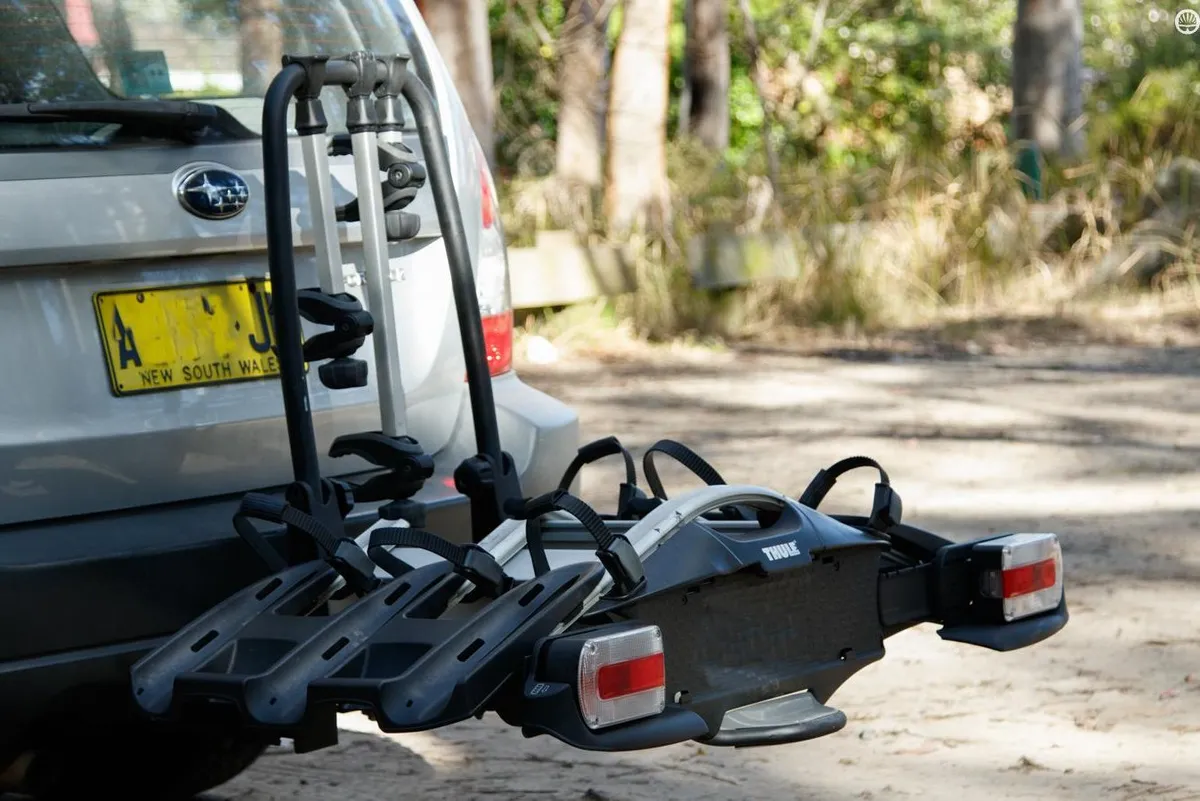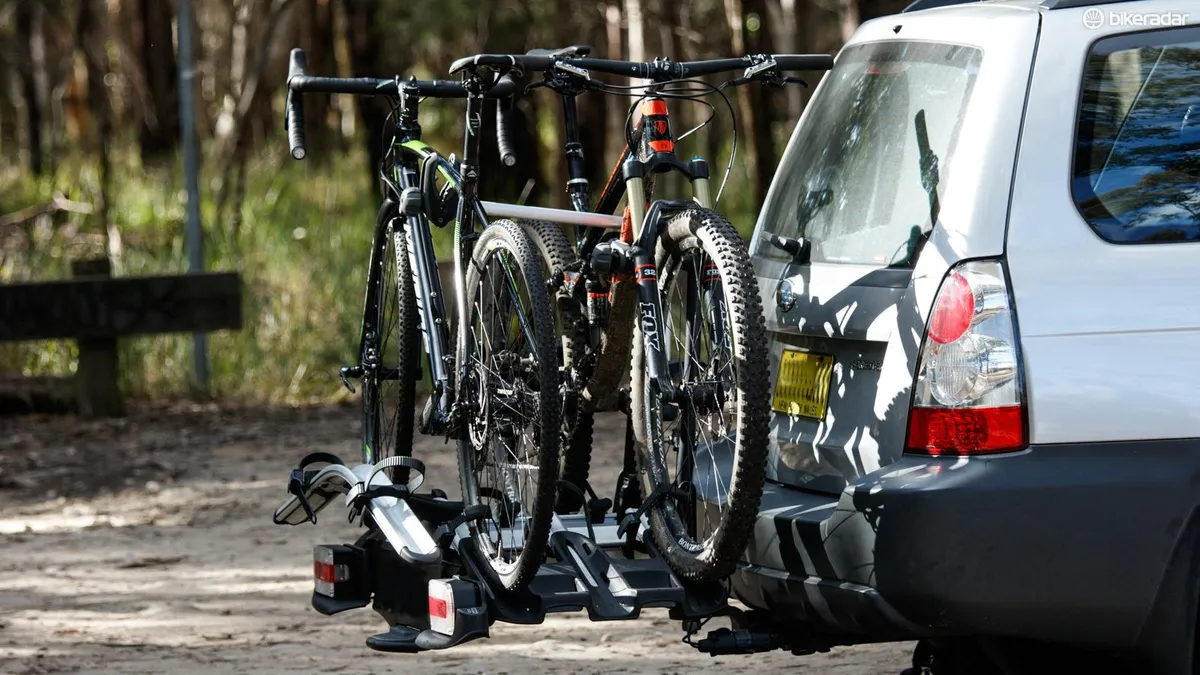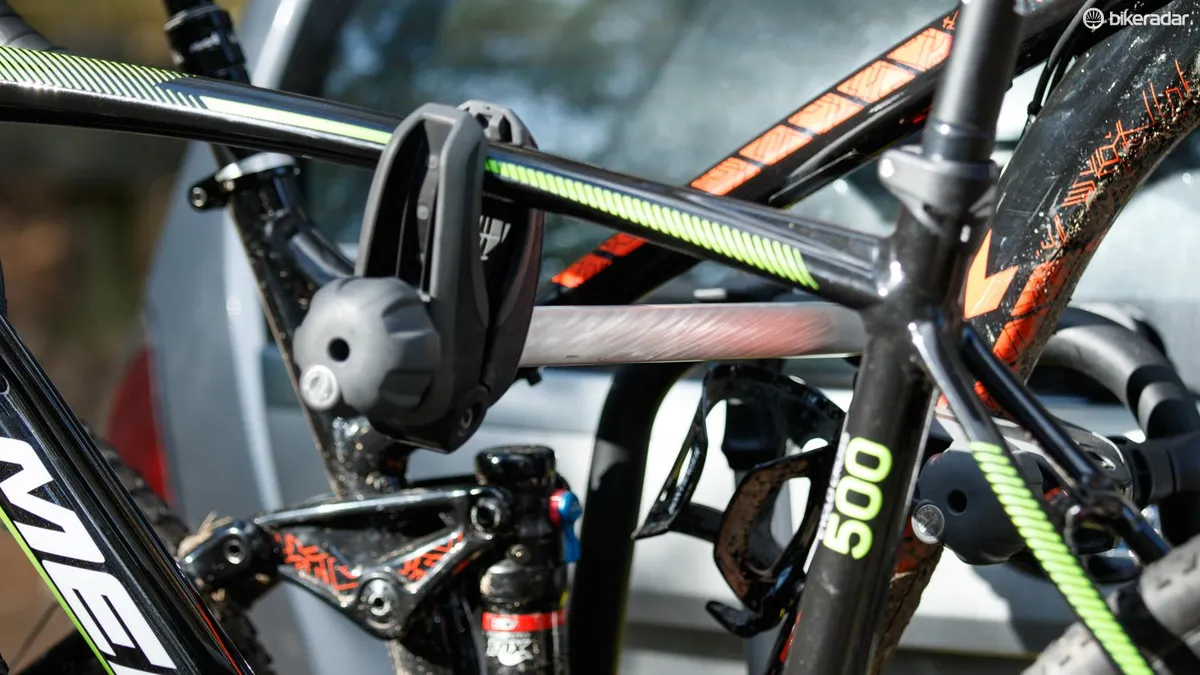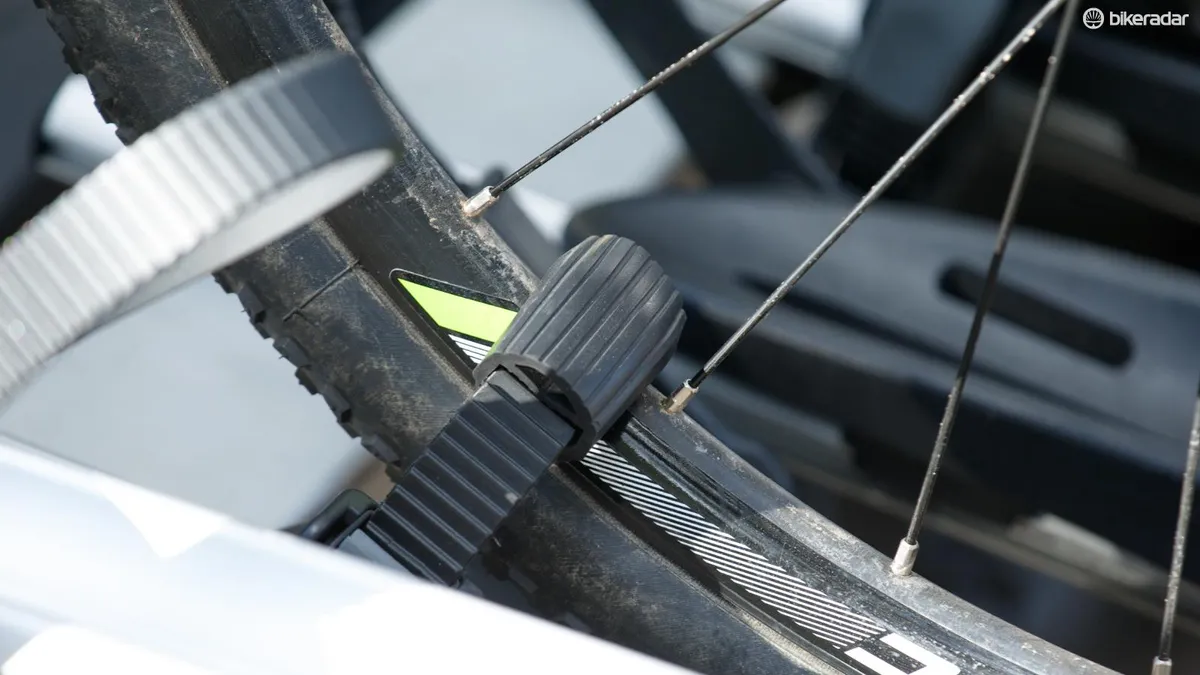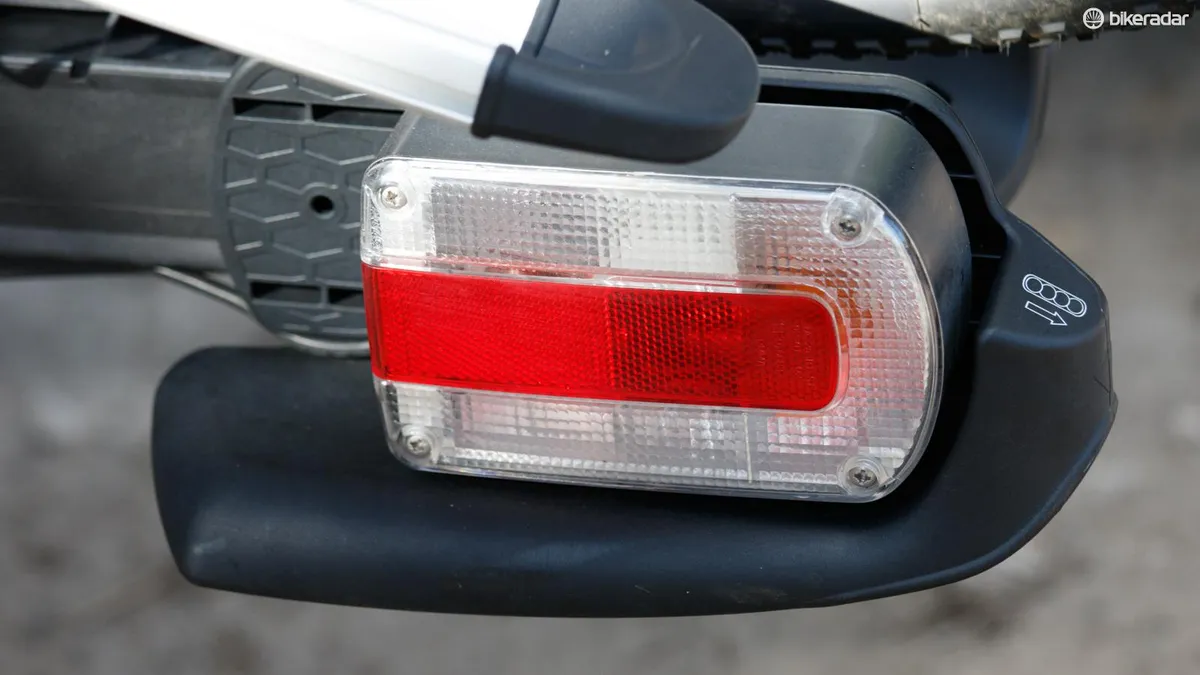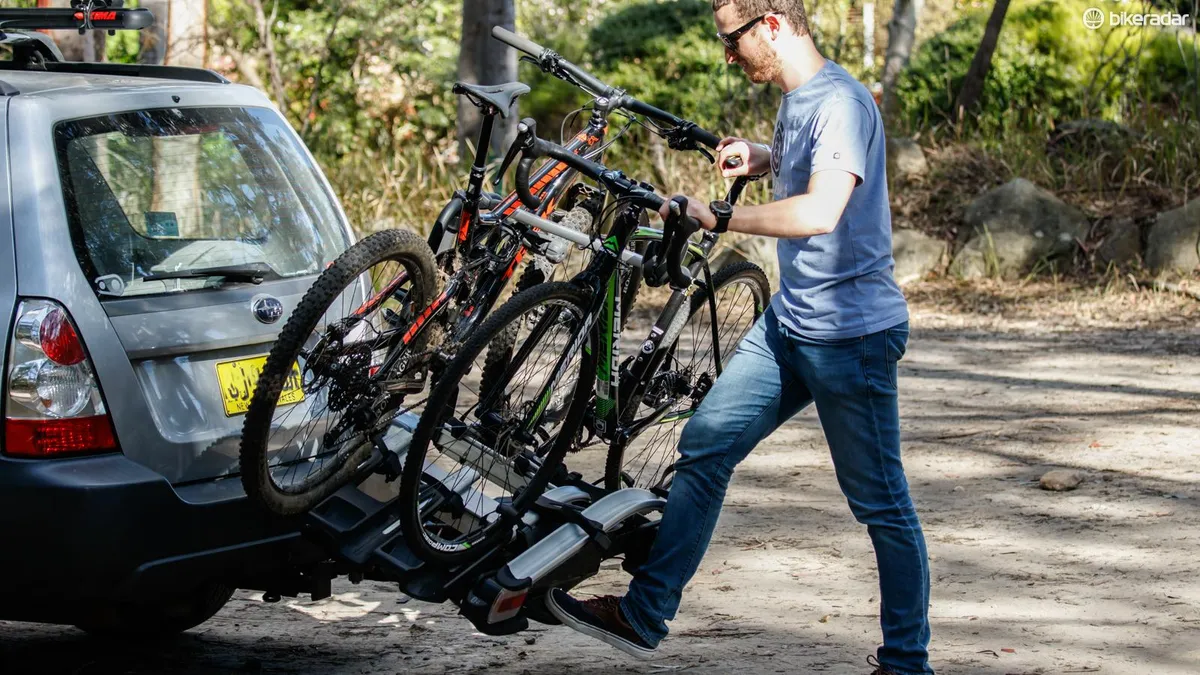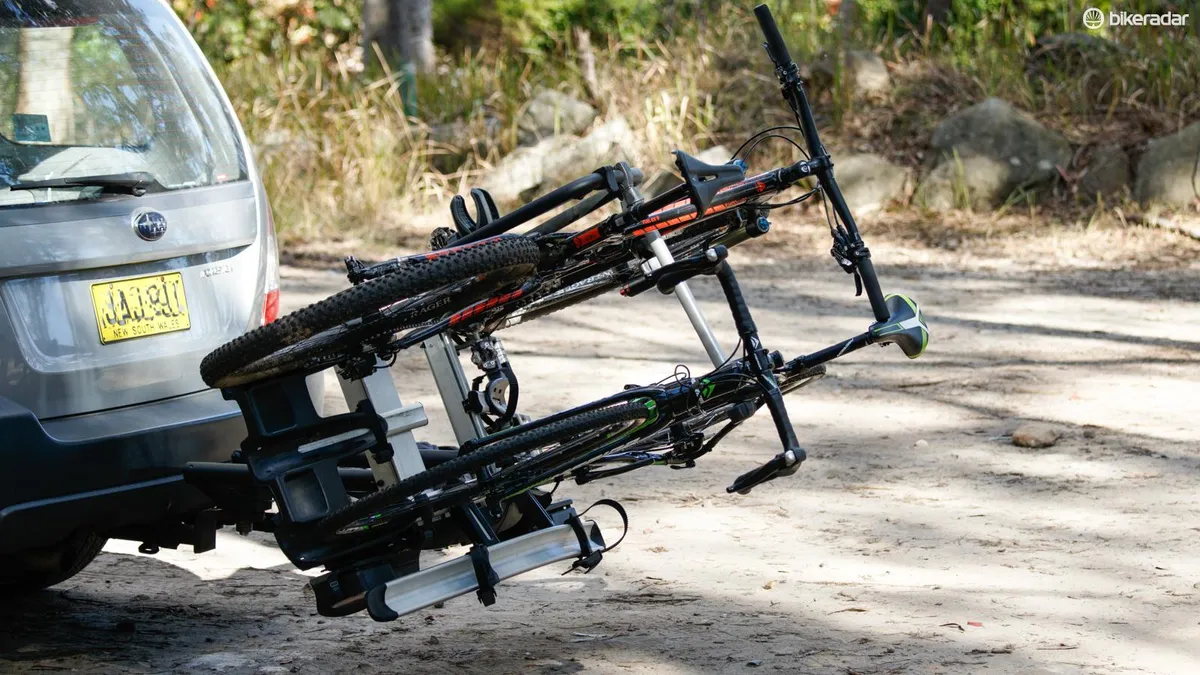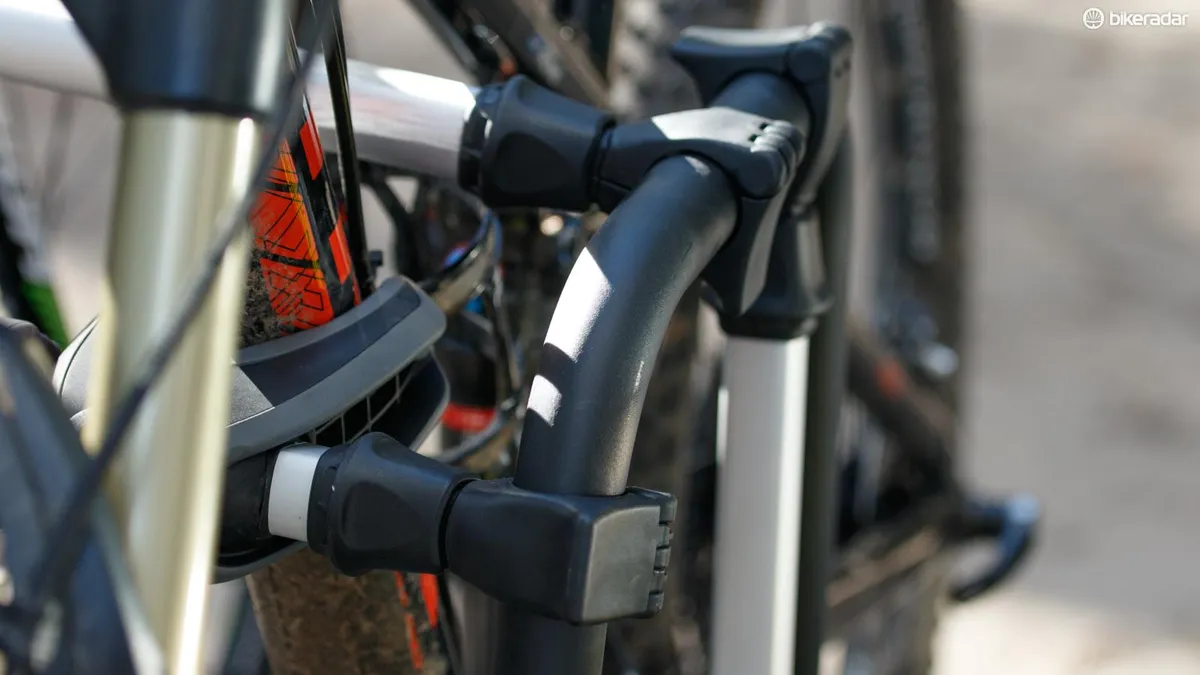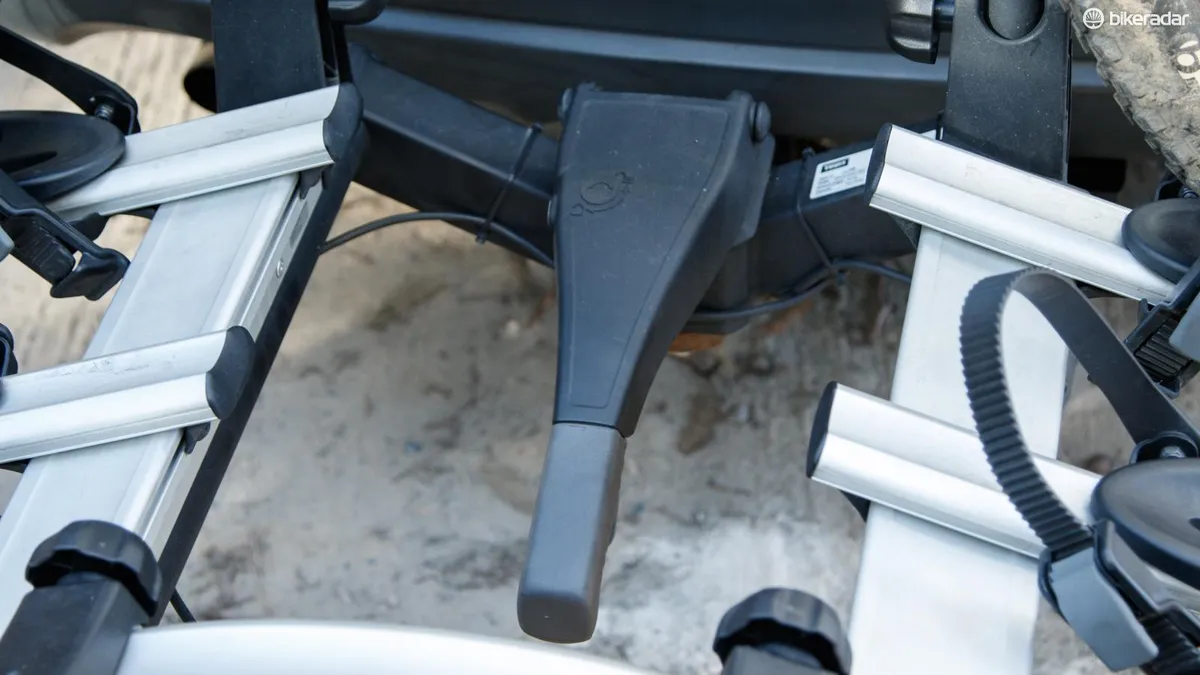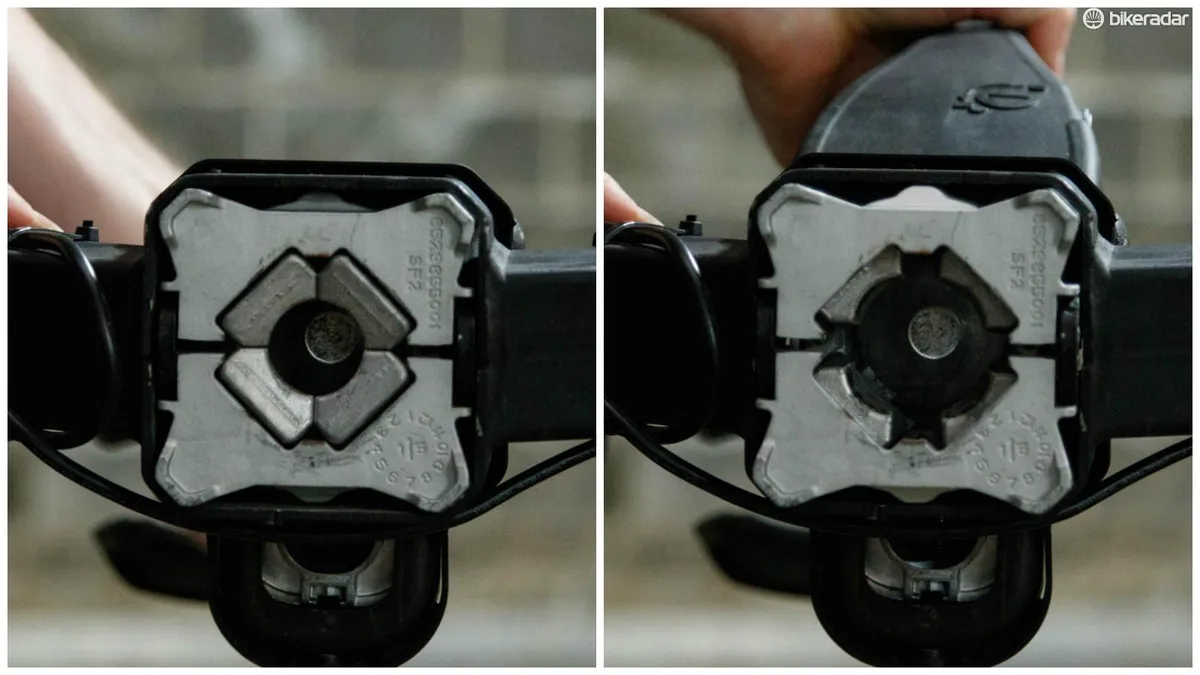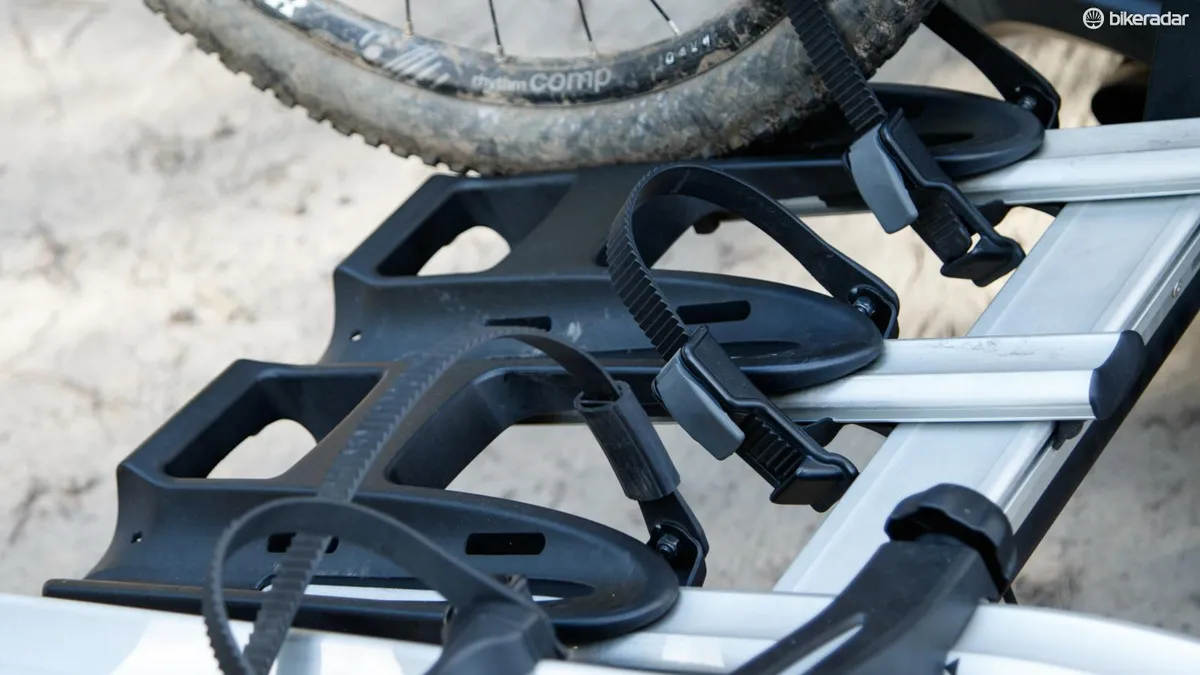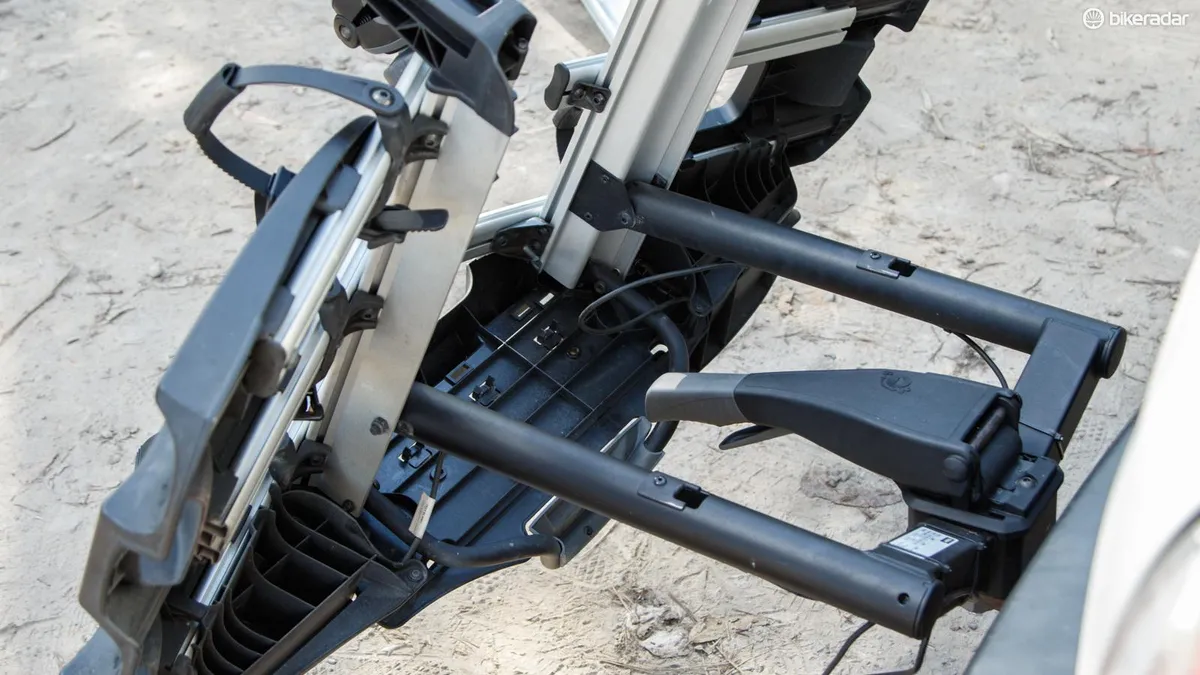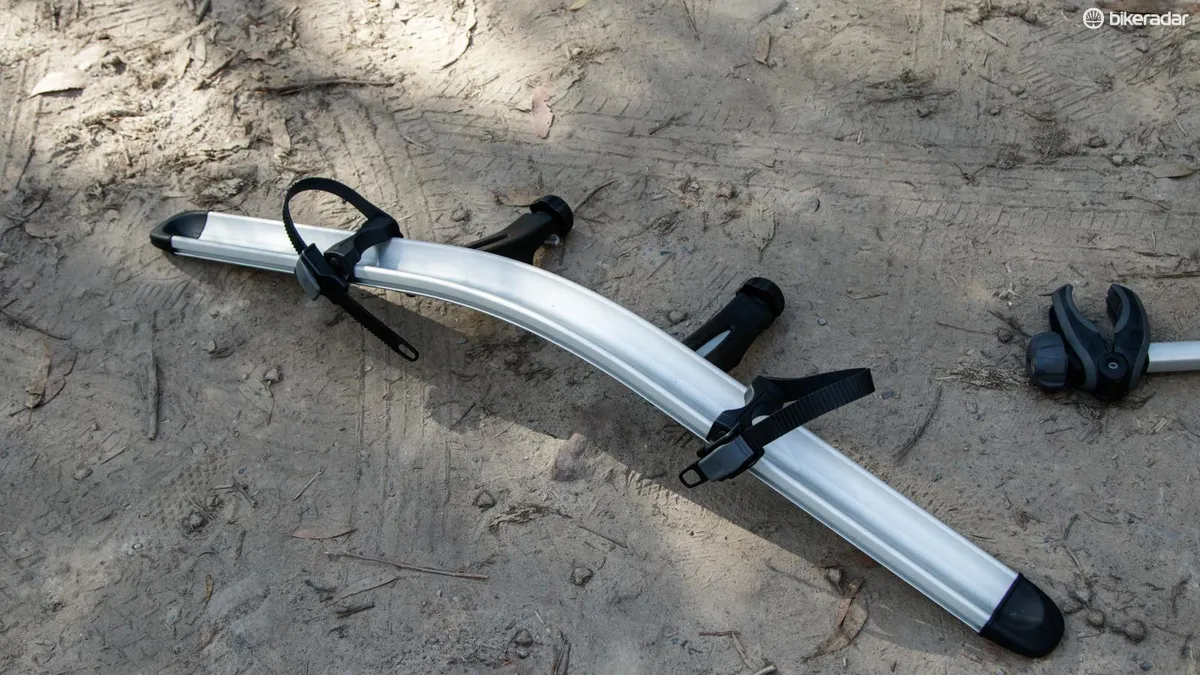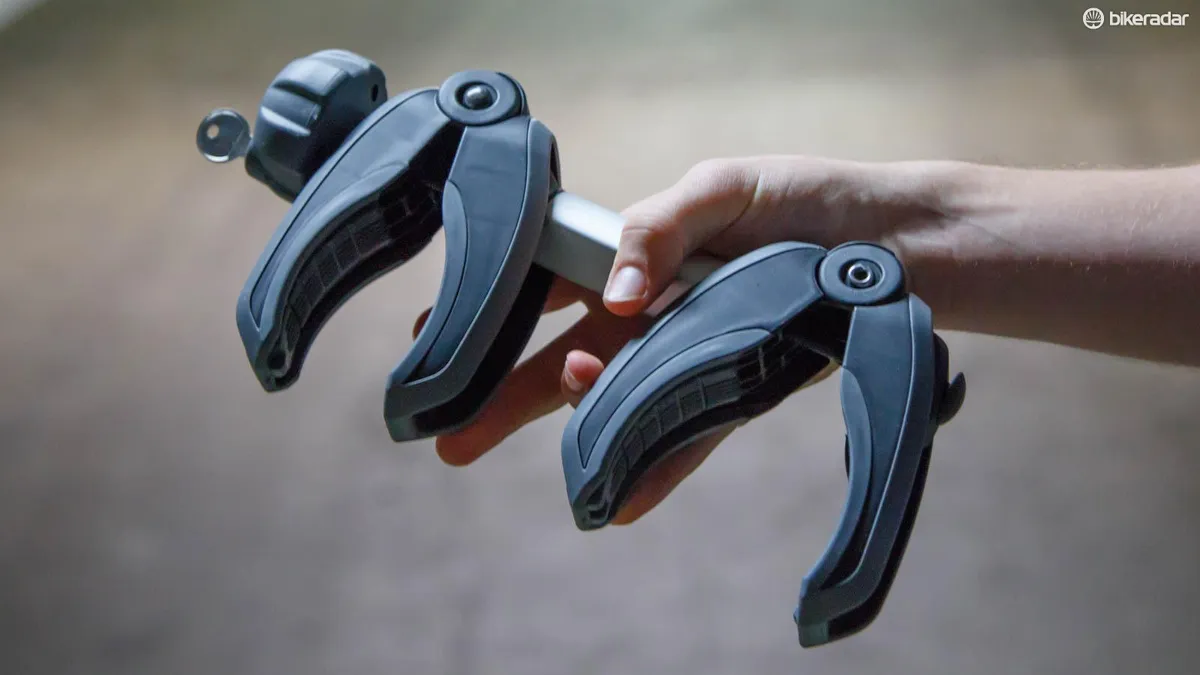Designed in a similar fashion to modern roof racks, Thule’s new VeloCompact rack supports the bikes’ weight from the wheels, with a securing arm purely to ensure the bikes remain upright. With the rear placement of this rack, though, you’re not having to lift the bikes above your head, rather just to the height of your car’s bumper.
When compared to more traditional tow bar racks, the VeloCompact offers a more secure hold to the bikes, with little chance of bikes rubbing each other when on the move. Additionally, there's little risk that an unusual frame design or bike size will cause fitment issues.
The VeloCompact is available in two models, the 925 which is designed to carry two bikes, or as tested, the 927 for carrying three bikes. The 927 is compatible with the ‘fourth bike adaptor’, meaning our tester is capable of carrying up to four bikes with a total load of 60kg.
Installation
The rack arrives fully assembled and it’s just a matter of unfolding the collapsible back before it’s ready to install.
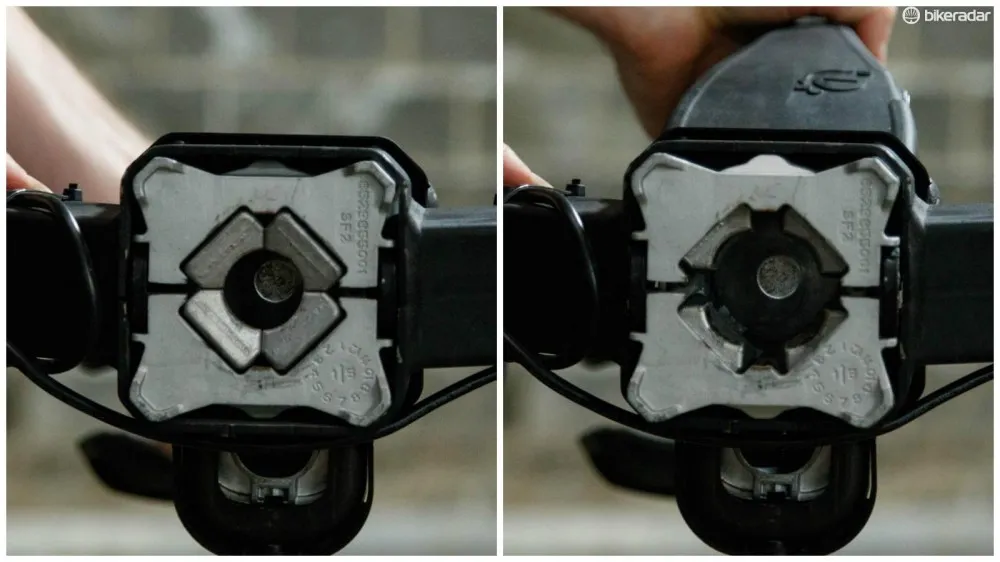
The four-sided towball clamp works with one pull of the lever
The rack clamps onto a standard towball from four sides, with what looks like something out of an Alien movie. In one easy push of the centrally mounted lever, the rack is secure and ready to be locked with its supplied key. Assuming the towball has its own security measure, your rack should be safe from theft.
The tension of this clamping mechanism is adjustable, and while we spent two minutes fiddling with it at first, we’ve since ignored it. It’s certainly a rigid hold on the towball and feels similarly secure to that of a heavier square hitch rack.
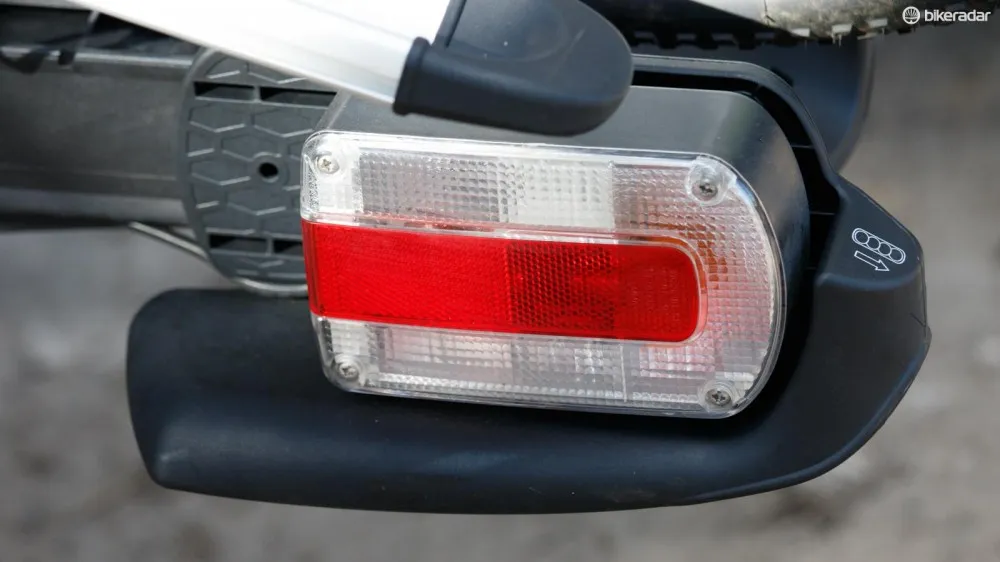
Tail, indicator and brake lights are included on the VeloCompact
Given that the rack and bikes will be covering your licence plate, the VeloCompact includes its own plate holder and associated brake, indicator and tail lights. For this, a common seven-pin round plug is given, adapters are sold by Thule for other plug types (AU$25). Assuming you have the correct adapter and your car has the safety light power output, it's a plug and play affair.
Loading the bikes
Loading bikes is straightforward, with each bike needing both its wheels strapped down and the arm connected to a part of the frame.
Bikes fit best when you alternate them handlebar to saddle, and of course it’s quicker and easier to fit fewer bikes. The more bikes added, the more care must be taken to ensure things like cranks and handlebars aren’t rubbing wrongly – which for mountain bikes can be a fiddle with just 19cm between bikes.
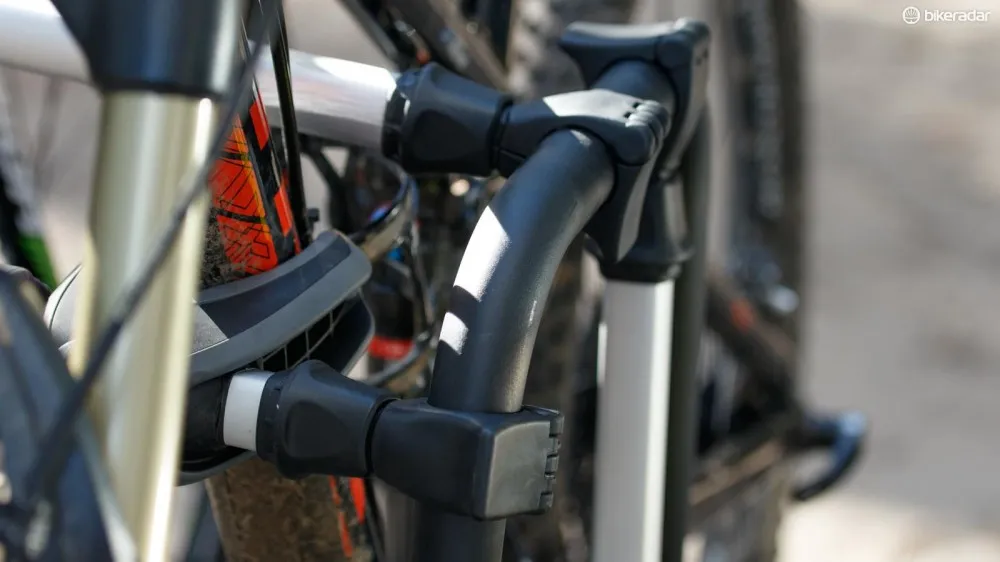
The frame securing arms can unclip from the rack once loosened
The frame-holding arms feature quick disconnect clips and so this step can be left for once the wheels are snugged up. From here, you feed the frame holder arm through and clip it into place. You then wind up the knob until secure, although you must be careful to not crush thin frame materials (such as carbon) from over-tightening.
The holders fit best around round tubes, but we’ve successfully clamped onto square and triangular-shaped tubes too. The clamps can open up extremely wide, and we’re yet to find a frame design that won’t fit this rack.
The rack offers adjustable wheel holders, meaning even long wheelbase 29ers have plenty of support available – although how far these stick from the sides on smaller cars may be more an issue.
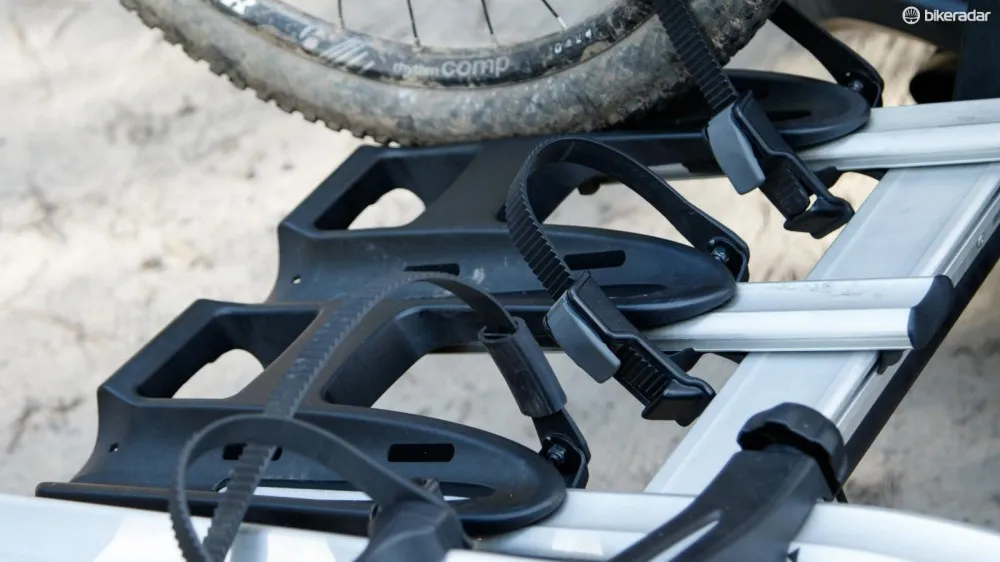
The wheel trays are all connected on each side
One nuisance we found in the wheel holders that all slide together is when fitting a combination of long wheelbase bikes (a 29er) and a short wheelbase (a 20in kids’ bike). Thankfully the 35cm long wheel straps make it workable, but independent wheel holders would ease this.
These long straps also work well on deep road wheels and big mountain bike rubber, but most fat bikes and plus-sized mountain tyres will be past the holding capacity.
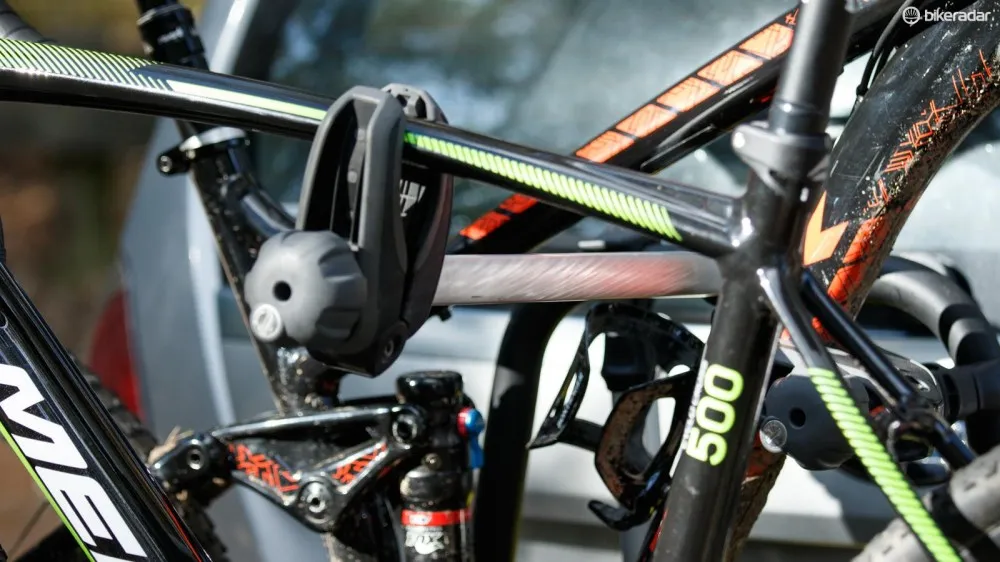
The frame clamps can be locked for security, with Thule now including lock cores and keys with the rack
Once all mounted and in place, the first and third clamping arms are fitted with lock cores, allowing the bike frames to be locked to the rack (which is locked to the towball). The middle (second) bike doesn’t need a lock, as the third bikes’ arm will likely be running through its frame. There's nothing included for securing your wheels from theft, though.
Adding a fourth bike
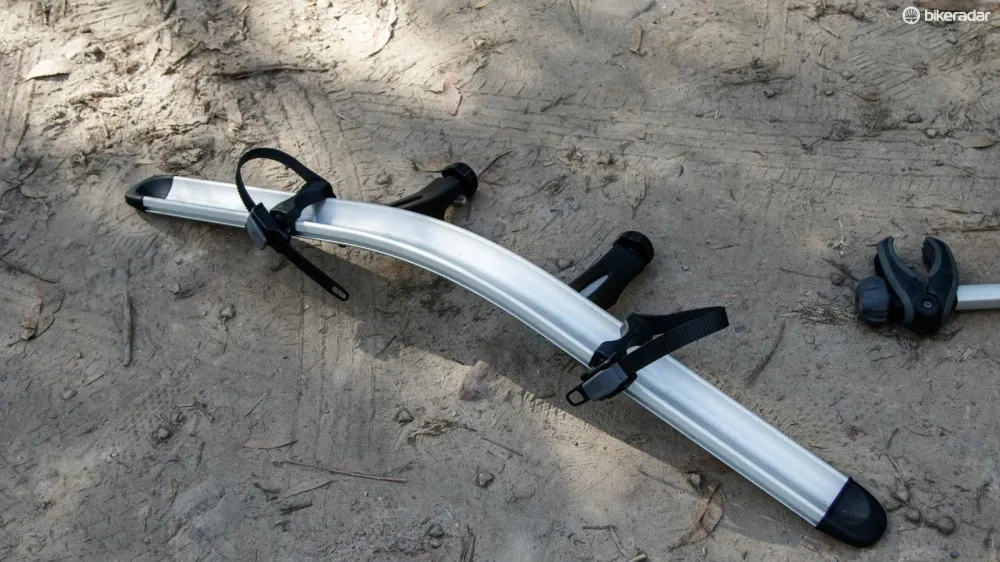
The fourth bike holder is an add-on accessory
For £115 / AU$290, the 9262 fourth bike holder enables this rack to carry one more ride. With this, our sample turns into a four-bike carrying monster, with no tools needed to do so. With a bike carrying capacity of 15kg, the adaptor adds 2.7kg to the rack’s 18kg weight.
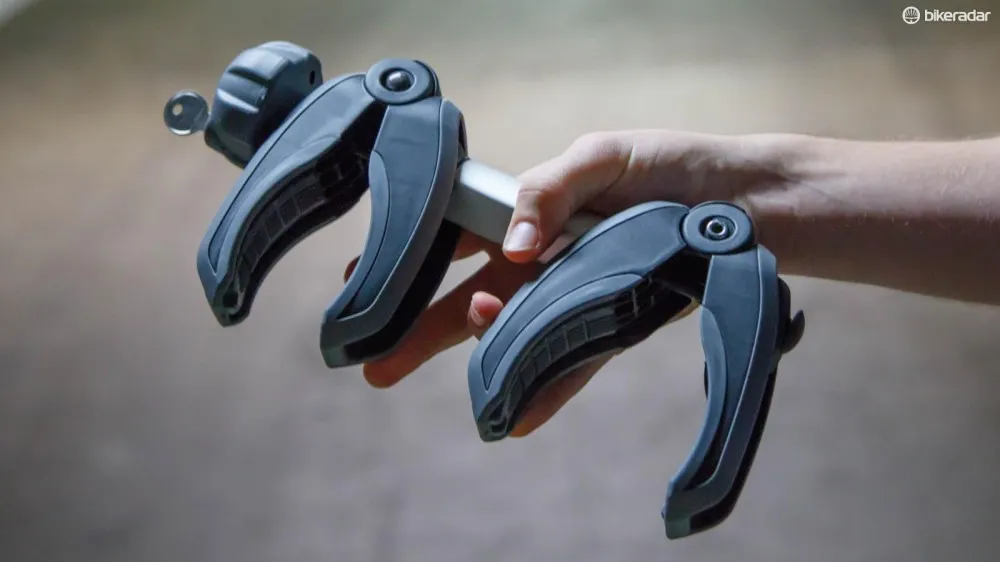
The frame clamp for the 4th bike
Where the three other bikes use removable arms that connect directly to the rack, the frame holding arm for the add-on bike simply connects to the next nearest bike. It’s not quite as secure as the other bikes that connect directly to the frame, but it can be trusted. It also includes a lock core, offering a little extra assurance against theft.
The drive
Fully loaded and on the move, the VeloCompact is comfortingly secure. Looking in the rear view mirror at speed will show the bikes moving ever so slightly, but this is the bars catching the wind, and not the bikes bumping against each other. For us, the most movement was actually found in our hitch bar, where there was some flex seen before connecting to the relatively rigid rack.
Of course the rack places additional weight at the rear of your vehicle, although it’s likely not enough load to affect handling. Used on our Subaru Forester, the drive handling is near unchanged and superior to that of loaded roof racks – especially in high wind.
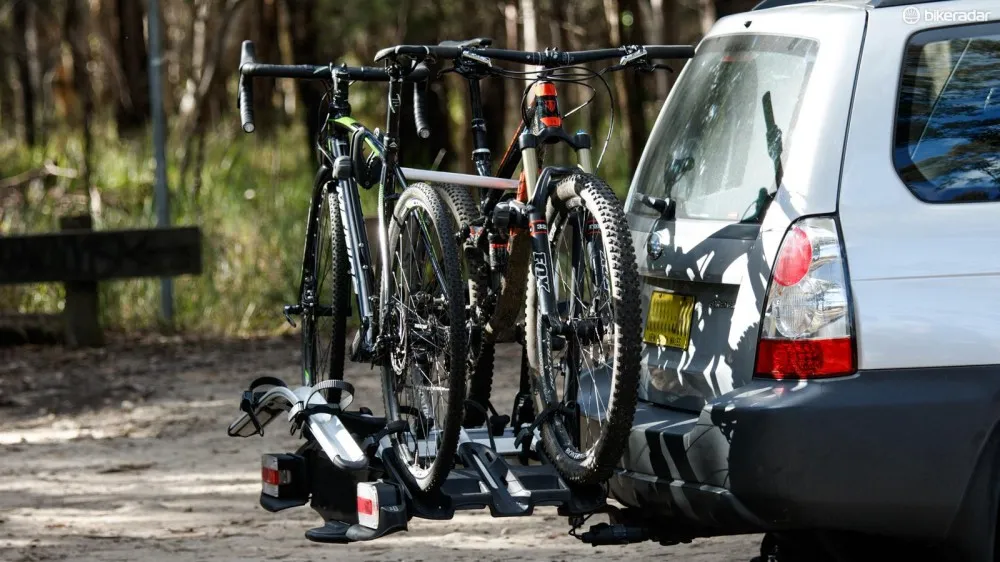
The rack can complicate parking, but otherwise you'll hardly know it's there
Parking can be a little trickier, with the rack adding 65cm to your vehicle's overall length. Not something you want to test, but an empty 4th bike holder will act as a bumper and protect the other bikes at low speed if you do misjudge a pole or other vehicle.
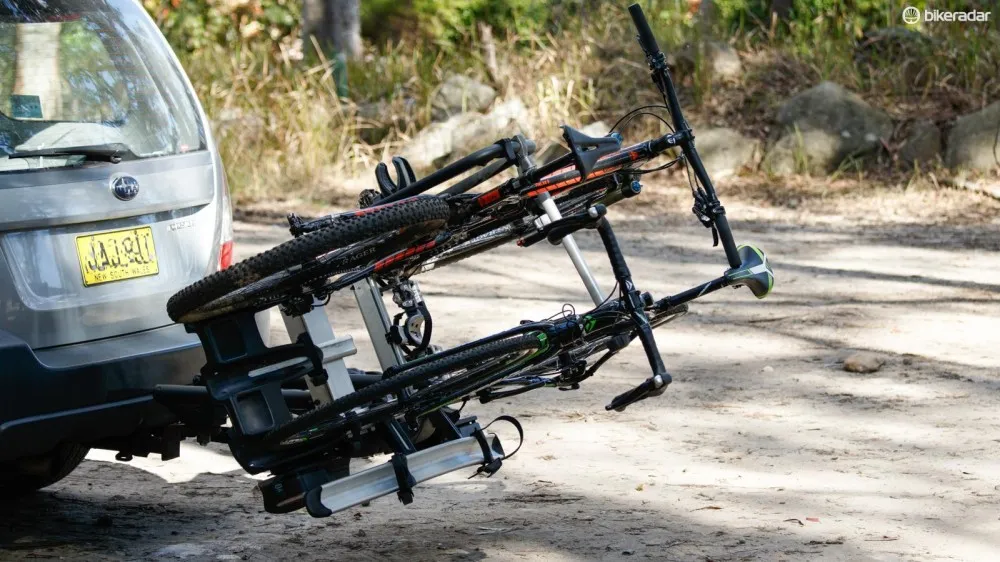
Once parked, the rack can easily tilt away for boot access
Pulling into the shops or up for lunch with bikes loaded on the back can be problematic with many rear-placed racks, but not the VeloCompact. Here, simply step on the front lever and the rack will tilt toward you. Even loaded with mountain bikes featuring long handlebars, we were able to easily open our Subaru's hatch door and gain easy access to the back.
Rack storage
While it’s possible to leave the rust-proof VeloCompact on your car full-time, you’ll most likely want to remove it when not in use. With this, the rack’s back arm folds down and the wheel holders/brake lights all easily slide inwards, allowing it to fit inside most standard car boots. Still, it’s hard to hide the awkwardly shaped 18kg weight when it comes to carrying the rack anywhere.
Conclusion
A rack of this design is certainly a far larger investment than the basic 'two-prong' type towball racks. However, you'll be looking to spend a similar amount to place bikes on your car roof, and this rack is aimed at a similar enthusiast market. The VeloCompact is certainly expensive and a little awkward to store, but its durable and well-thought construction makes it a suitable option for anyone seeking a high quality rack to safely transport their bikes.
Note: Thule does not offer this or similarly styled towball-mounted rack models in the United States.

